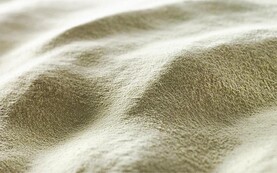Dairy farmers are facing some months of low prices for milk as they set off on a new era of production without quota in Europe. There were reductions for all of the main commodities in Dutch quoted prices on Wednesday and New Zealand’s Global Dairy Trade (GDT) auction index dropped by 10.8% on contracts to be delivered between May and October. That follows a fall of 8.8% a fortnight ago.
Dairy traders say that sentiment at the GDT has turned down since buyers realised that the New Zealanders had overstated the effect that drought was having on their milk output. The reduced tonnages offered at the earlier auctions spooked the market into higher bidding but that has been reversed now with price back to the levels seen at the start of 2015.
All products in this GDT saw price falls, with the average for whole milk powder down by 13.3% to US$2,538/t. Skimmed milk powder was down by 9.9% to $2,467/t and butter fell by 7.6% to $3,259/t.
These products account for most of the 23,162 tonnes sold.
This week’s Dutch prices for butter fell by €80/t to €3,180/t, while milk powders dropped by €40/t to €50/t.
Speaking ahead of the GDT auction, Fane Valley chief executive Trevor Lockhart said that the initial uplift in product prices in January and February 2015 has ‘‘retrenched somewhat as buyers wait to evaluate the post-quota production response in Europe’’.
He added that this market uncertainty is likely to prevail through at least the end of June, thereby limiting any significant recovery in market prices for now.
Much will depend on how much EU milk supply increases. The EU Agriculture Commissioner Phil Hogan last week stated that the Commission is forecasting just a 1% rise in milk output in 2015.
This may reflect the anticipated producer reaction to lower prices, which could partly offset the freeing up of quota restrictions. The Commissioner clearly pointed to a bright future for the dairy sector, referring to predicted growth of global consumption of dairy products by 2% per year.






 This is a subscriber-only article
This is a subscriber-only article










SHARING OPTIONS: